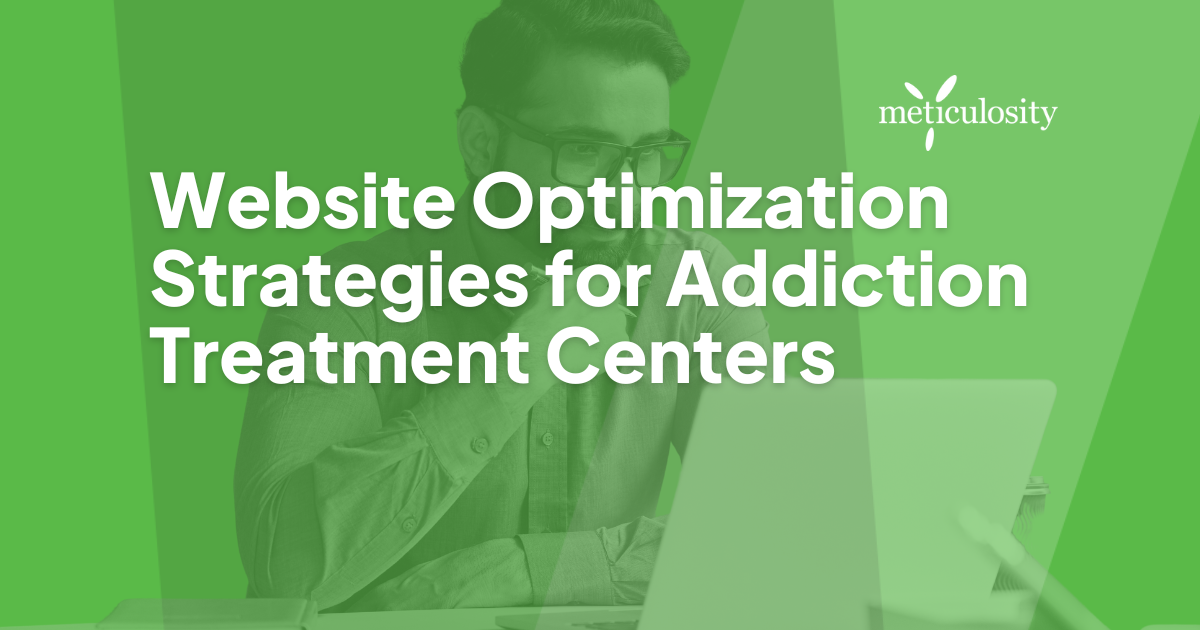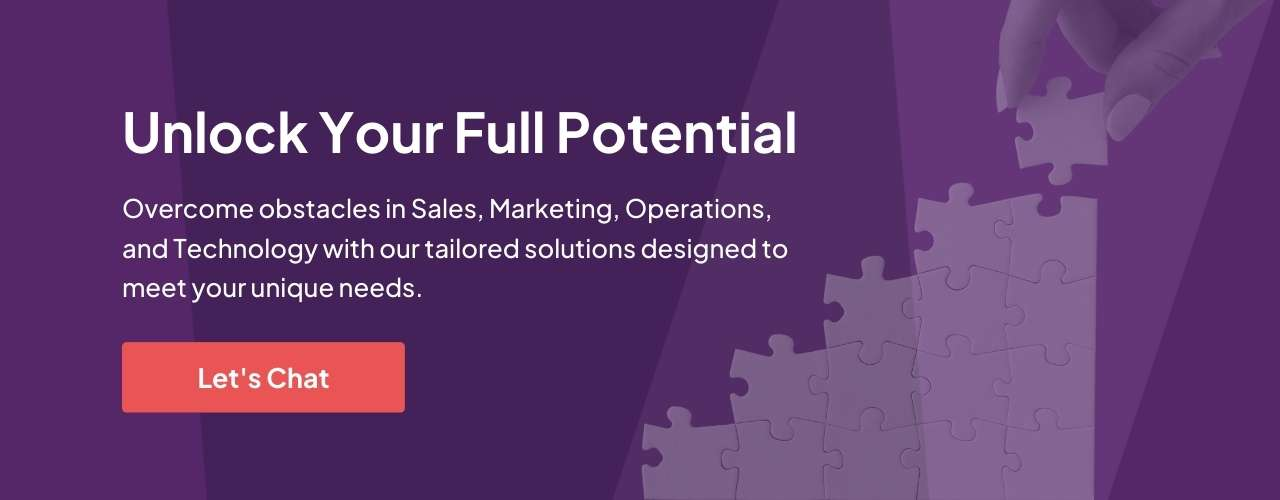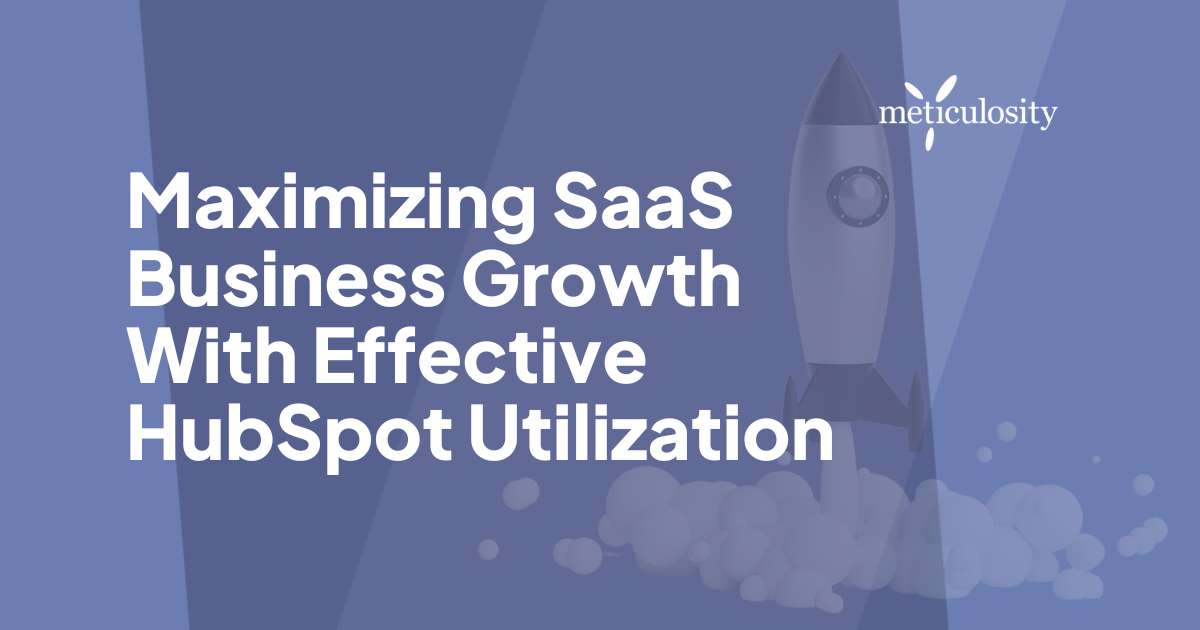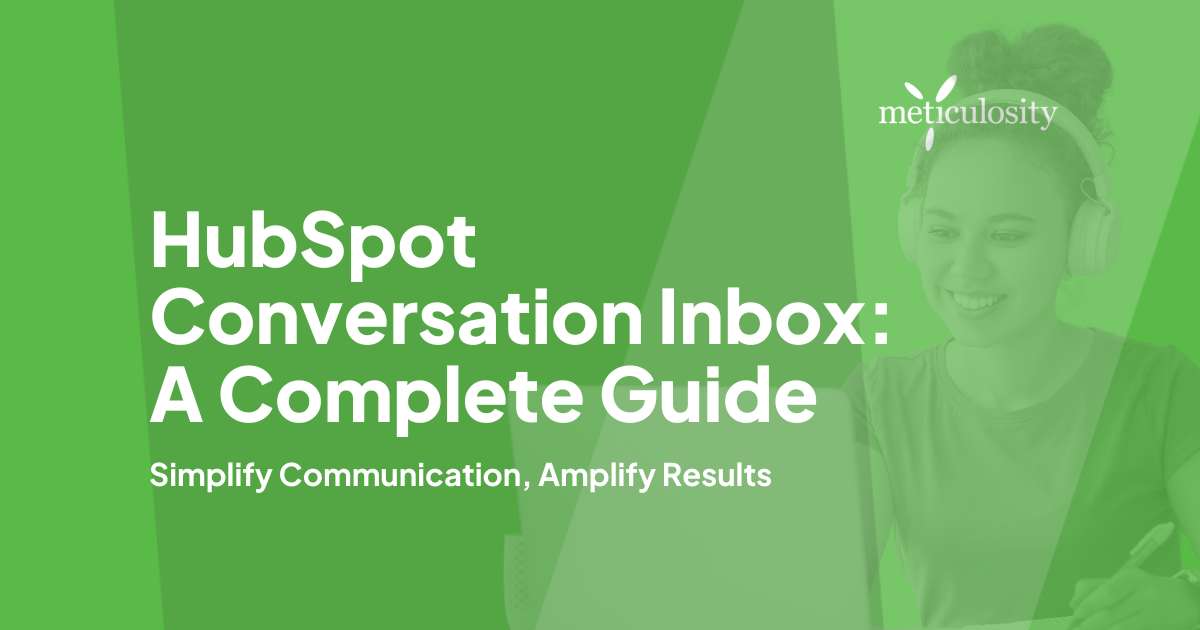Are you grappling with the challenge of drawing in and converting patients to your addiction treatment center via your website?
In this article, we will dig deep into effective strategies on how one ought to fine-tune their website for superior user experiences, and increased SEO performance - all culminating in a rise in admissions.
Key Takeaways
- Website optimization is crucial for addiction treatment centers to increase their online visibility and attract potential clients.
- Key strategies for optimizing a website include making it user-friendly, using clear and familiar language, optimizing load times, ensuring mobile compatibility, incorporating relevant keywords in content, adding internal links, using high-quality images with proper file sizes, implementing strong security measures, having clear call-to-action buttons, and tracking website performance with tools like Google Analytics.
- SEO plays a vital role in website optimization by targeting keywords that people use when searching for addiction help. Utilizing local SEO techniques can help target specific geographic areas and improve visibility in search engine results. Building backlinks from reputable websites boosts credibility and authority.
- Marketing is essential in website optimization for addiction treatment centers. Developing a comprehensive marketing plan includes identifying the target audience's needs, setting goals/objectives, determining unique selling propositions (USP), creating a content strategy, utilizing social media platforms effectively through regular posting and engaging with the audience as well as paid advertising options on platforms like Google Ads or social media sites. Establishing partnerships/collaborations within the industry helps expand referrals. Monitoring strategies regularly allows adjustments for optimal results.
The Importance of Website Optimization for Addiction Treatment Centers
Website optimization is crucial for addiction treatment centers as it ensures that their online presence is easily discoverable, relevant, and user-friendly. By implementing effective SEO and marketing strategies, treatment centers can increase their visibility to potential clients in need of help.
Key strategies for success
As experts in website optimization, we're thrilled to share some key strategies for success.
- Make your site easy to use.
- Use clear words that most people know.
- Keep load times short.
- Make your site work well on phones and tablets.
- Use words in your content that people may search for.
- Add links to other parts of your site within your text.
- Make sure images are high quality but not too large in file size.
- Set up strong security to protect user data.
- Have a clear call-to-action, like "Call Now" or "Sign Up."
- Keep track of how visitors use your site with tools like Google Analytics.
Implementing SEO and marketing strategies
Let's look into SEO and marketing plans for your site. It all starts with some key steps:
- Pick the right keywords. These are words that people search for when they need help with addiction.
- Make sure you use these keywords in your site's content, titles, and meta tags.
- Go local with your SEO. Add the city or region to your keywords if you offer services in a specific area.
- Set up backlinks from other trusted sites to boost your own site's trust and rank.
- Make an overall plan for marketing your site. This step-up should include social media, blogs, and emails to stay in touch with users.
- Always think about ethics when you put out ads or posts. Never make false claims about what you can do to help people fight addiction.
- Aim to have a fast website that is easy to use. Nobody wants to wait a long time for a page to load or search forever for the info they need.
- Keep mobile users in mind as well because many of them will visit your website on their phones or tablets.
- Create clear calls-to-action (CTAs) that guide users on what they should do next on your website.
- Always track how well your website is doing by using tools such as Google Analytics.
SEO for Addiction Treatment Centers
Implementing effective SEO strategies is crucial for addiction treatment centers to ensure that their website ranks higher in search engine results, including the use of targeted keywords, local SEO techniques, and building backlinks to establish credibility.
Effective use of targeted keywords
Targeted keywords matter a lot. They help you reach the right people online. You need to pick words that your audience uses when they search for addiction help. Think like them and use those same words on your site too.
But don't stuff your content with these words! Use them in a way that makes sense and adds value. This helps Google see you as useful, which boosts your rank in search results.
Utilizing local SEO
Local SEO is a crucial strategy for addiction treatment centers to optimize their website and attract targeted local traffic. By focusing on specific geographic areas, you can increase your visibility in search engine results when people are looking for addiction treatment services near them.
To make the most of local SEO, it's important to include location-based keywords throughout your website content, including in titles, headings, and meta descriptions. Additionally, creating listings on local directories and encouraging online reviews from satisfied clients can help boost your credibility and rankings in local search results.
By implementing these strategies, you can drive more qualified leads to your addiction treatment center's website and improve overall visibility in your target market.
Building backlinks for credibility
Building backlinks is an essential strategy for increasing the credibility of your addiction treatment center's website. Backlinks are links from other reputable websites that direct users to your site.
These links act as endorsements and can boost your website's authority in search engine rankings. To build backlinks, you can reach out to relevant industry websites, collaborate with influencers or experts, and create valuable content that others will want to share.
By actively seeking backlinks, you can improve your website's visibility and establish trust with potential clients or patients.
Implementing a proactive approach to building backlinks is crucial for enhancing the credibility of your addiction treatment center's website. It involves creating partnerships with trusted industry sources and influential figures who can endorse your services through their platforms.
The Role of Marketing in Website Optimization
Marketing plays a crucial role in website optimization for addiction treatment centers, as it involves developing a comprehensive marketing plan, utilizing social media and content marketing strategies, and ensuring ethical considerations are met in all marketing materials.
Developing a comprehensive marketing plan
To optimize your addiction treatment center's website, it is essential to develop a comprehensive marketing plan. Here are some key components to include:
- Identify your target audience and their needs: Understand who your ideal clients are and what specific challenges they face. This will help you tailor your marketing efforts toward their needs.
- Set clear goals and objectives: Establish measurable objectives for your marketing plan, such as increasing website traffic or generating more inquiries. Having specific goals will guide your strategies and allow you to track progress.
- Determine your unique selling proposition (USP): Define what sets your addiction treatment center apart from the competition. Highlight the distinct benefits and features you offer, whether it's specialized programs or experienced staff.
- Create a content strategy: Develop a plan for regularly creating valuable content that resonates with your target audience. This can include blog posts, articles, videos, or infographics that provide educational information about addiction treatment and recovery.
- Utilize social media platforms: Leverage social media channels like Facebook, Instagram, or LinkedIn to engage with potential clients and share relevant content. Regularly post updates, client success stories, and helpful resources to build trust and credibility.
- Invest in paid advertising: Consider running targeted advertising campaigns on platforms like Google Ads or social media sites to reach a wider audience. Optimize keywords related to addiction treatment so that people searching for help can find your center easily.
- Establish partnerships and collaborations: Form strategic partnerships with local healthcare professionals, community organizations, or counseling centers to expand referrals and enhance your reputation within the industry.
- Monitor and adjust strategies: Continuously track the performance of your marketing efforts using tools like Google Analytics or social media insights. Analyze data regularly to identify what's working well and make necessary adjustments to optimize results.
Utilizing social media and content marketing
Social media and content marketing are essential strategies for optimizing your addiction treatment center website. Here's how you can effectively utilize them:
- Create a strong social media presence: Build profiles on popular platforms like Facebook, Instagram, and LinkedIn. Share informative and engaging content regularly to attract followers.
- Engage with your audience: Interact with followers by responding to comments, messages, and reviews. Encourage discussions, answer questions, and provide valuable information about addiction treatment.
- Use targeted advertising: Take advantage of social media advertising options to reach a wider audience. Target specific demographics that align with your ideal patient profile.
- Share user-generated content: Encourage clients to share their success stories or testimonials on your social media pages. This builds credibility and trust in your services.
- Develop a content marketing strategy: Create relevant and educational blog posts, videos, infographics, or podcasts related to addiction treatment topics. Publish this content on your website's blog section regularly.
- Optimize content for search engines: Incorporate relevant keywords from your research into the titles, headings, and body of your content. This helps improve visibility in search engine results.
- Promote content across platforms: Share snippets or teasers of your blog posts or videos on social media platforms with links back to your website for more information.
- Collaborate with influencers: Identify influencers or industry experts who align with the values of your addiction treatment center. Partner with them for guest blog posts or social media takeovers to expand reach.
- Utilize email marketing: Build an email list through sign-up forms on your website or during consultations. Send regular newsletters containing helpful information about addiction treatment options and updates about your facility.
- Stay consistent and authentic: Be consistent in posting on social media and producing quality content that resonates with your target audience’s needs and interests.
Ethical considerations in marketing materials
It is important to take ethical considerations into account when creating marketing materials for addiction treatment centers. You must ensure that your marketing strategies are truthful and transparent, and do not manipulate or exploit vulnerable individuals seeking help.
This means avoiding misleading claims, exaggerations, or false promises in our advertisements. You should prioritize the well-being and trust of potential clients by providing accurate information about the services offered and the qualifications of your treatment center.
By being ethical in your marketing materials, you can build a positive reputation for your addiction treatment center while also maintaining professional integrity.

Improving Site Speed and Performance
Improving your website's speed and performance is crucial for providing a user-friendly experience. Here are some effective strategies to optimize load times and enhance site performance to increase visitor engagement and conversions.
Why it's important for user experience
When a website loads quickly, users are more likely to stay and explore its content. Slow-loading sites frustrate visitors, leading them to leave and find alternatives.
By optimizing your site's speed, you ensure that users can access information efficiently and have a positive interaction with your website. This can increase engagement, improve conversion rates, and ultimately contribute to the success of your addiction treatment center.
Ways to optimize site speed
To improve the speed of your website, follow these steps:
- Compress image sizes: Reduce the file size of images on your site without compromising their quality using tools like Adobe Photoshop or online image compressors.
- Minimize HTTP requests: Reduce the number of elements on a page that require a separate HTTP request to load, such as scripts and stylesheets.
- Enable browser caching: Set expiration dates for static resources on your site so that browsers can store them locally and load pages faster upon subsequent visits.
- Use a content delivery network (CDN): Utilize a CDN to distribute your website's content across multiple servers worldwide, ensuring faster loading times for visitors regardless of their location.
- Optimize code and scripts: Minify HTML, CSS, and JavaScript files by removing unnecessary characters and whitespace to make them smaller and quicker to load.
- Leverage browser caching: Determine how long browsers should cache resources from your site to reduce load times for returning visitors.
- Upgrade web hosting: Consider moving to a dedicated server or VPS hosting if shared hosting is causing slow page load times due to resource limitations.
- Limit redirects: Minimize the use of redirects on your website as each redirect adds additional time to the page load process.
- Enable Gzip compression: Compress your website's files before they are sent over the network, reducing file size and improving transfer speeds.
- Monitor website performance regularly: Use tools like GTmetrix or Pingdom to analyze your site's speed and identify areas for improvement.
Responsive Design for Mobile Users
In today's mobile-driven world, addiction treatment centers must have a website that is optimized for mobile users. This means implementing responsive design techniques that adapt the layout and functionality of the site to different screen sizes.
Learn how responsive design can benefit your center and how to implement it effectively on your website. Read more about the importance of website optimization strategies for addiction treatment centers here.
The growth of mobile browsing
Mobile browsing has become incredibly popular in recent years, with more and more people accessing websites from their smartphones and tablets. It is so important to recognize this trend and optimize your website accordingly.
By ensuring that your site is mobile-friendly and responsive, you can provide a seamless browsing experience for users on any device. This means designing your website with simple navigation, easy-to-read text, and optimized images that load quickly.
By catering to the growing number of mobile users, you can increase engagement and reach a wider audience for your addiction treatment center.
Benefits of responsive design
Responsive design is crucial for addiction treatment centers as it ensures that their websites are user-friendly and accessible on all devices, including mobile phones and tablets.
With the increasing use of mobile browsing, having a website that adapts to different screen sizes and resolutions can significantly improve the overall user experience. Responsive design also helps with search engine optimization (SEO), as Google prioritizes mobile-friendly sites in search rankings.
By implementing responsive design, addiction treatment centers can reach a wider audience, increase engagement, and ultimately generate more leads and conversions.
How to implement it on your website
To implement responsive design on your website, follow these steps:
- Understand the importance: Recognize that mobile browsing is growing and having a mobile-friendly website is crucial for reaching a wider audience.
- Choose a responsive design framework: Select a responsive design framework or template that suits your needs. This will provide you with the foundation for creating a responsive layout.
- Optimize images: Ensure that all images on your website are properly optimized for mobile devices. Compress images to reduce file size without sacrificing quality.
- Use media queries: Create CSS rules using media queries to adapt the layout of your website based on different screen sizes. This will ensure that your site looks good and functions well on all devices.
- Test thoroughly: Test your website across various devices and screen sizes to ensure that it responds appropriately and delivers a consistent user experience.
- Prioritize content: Make sure that the most important content is displayed prominently on smaller screens, so users can easily find what they need without excessive scrolling or zooming.
- Simplify navigation: Consider using hamburger menus or other intuitive navigation options that are optimized for mobile users and take up minimal screen space.
- Incorporate touch-friendly elements: Design buttons and interactive elements with touch in mind, ensuring they are large enough to be easily tapped by fingers.
- Keep load times in check: Optimize page load times by minimizing unnecessary code, compressing files, and leveraging caching techniques.
- Stay up-to-date: Regularly update your website's responsive design to adapt to new devices and technologies as they emerge.

Maximizing SEO for Content and Website Structure
Incorporate targeted keywords throughout your content and optimize meta descriptions and titles for maximum SEO impact. Develop informative and relevant content that appeals to both users and search engines.
Incorporating targeted keywords
To optimize your addiction treatment center's website, it's crucial to incorporate targeted keywords throughout your content. These keywords are specific words or phrases that people use when searching for addiction treatment services online.
By including relevant keywords in your website copy, meta tags, and titles, you can improve your search engine rankings and increase the visibility of your site. This will help potential clients find you more easily when they're looking for addiction treatment options.
So be sure to conduct keyword research and strategically place these keywords throughout your website to attract more traffic and reach those who need your services.
Utilizing meta descriptions and titles
Meta descriptions and titles play a crucial role in website optimization for addiction treatment centers. These elements provide information about your web pages to search engines and users.
By utilizing relevant keywords in your meta descriptions, you can improve the visibility of your site in search engine results. Titles also need to be well-crafted and descriptive, accurately reflecting the content on each page.
Both meta descriptions and titles should be concise, engaging, and informative to entice users to click through to your website. It's important not only for SEO purposes but also for attracting potential clients seeking addiction treatment services.
Developing informative and relevant content
When developing content for your addiction treatment center's website, it is crucial to create information that is informative and relevant to your audience. This means understanding the needs and concerns of individuals seeking addiction treatment and addressing them directly through your content.
By providing valuable information, such as the different types of treatment options available or resources for support, you can establish yourself as a trusted source in the industry.
Additionally, make sure that your content is easy to understand and accessible to a wide range of readers. Using clear language and logically organizing information will help keep visitors engaged and encourage them to explore further.
Utilizing Effective Calls-to-Action
To maximize conversions and drive action, addiction treatment centers must incorporate clear and prominent calls-to-action (CTAs) throughout their website.
Importance of clear and prominent CTAs
Clear and prominent calls-to-action (CTAs) on your addiction treatment center's website are crucial for driving conversions and guiding users to take the desired action. CTAs serve as guideposts, telling visitors what to do next and encouraging them to engage with your content or services.
Having clear and prominently displayed CTAs helps increase user engagement, improve lead generation, and ultimately boost the success of your website optimization efforts. By using language that is concise, compelling, and easy to understand, you can effectively communicate the desired action to your audience.
Remember to place the CTAs strategically throughout your website so that they are easily visible and accessible.
Strategies for increasing conversions
As a marketer or business professional, we want to share strategies for increasing conversions on your addiction treatment center's website. Here are some effective tactics:
- Create compelling and relevant content that speaks directly to your target audience's needs and concerns.
- Use clear and prominent calls-to-action (CTAs) throughout your website to guide visitors toward taking the desired action.
- Optimize your landing pages by removing distractions and keeping the focus on the conversion goal.
- Test different variations of your CTAs and landing pages to identify what resonates best with your audience.
- Increase trust by showcasing testimonials, certifications, and credentials from satisfied clients or industry experts.
- Offer incentives such as free consultations or exclusive discounts to encourage visitors to take the next step.
- Implement retargeting campaigns to reach out to users who have shown interest but haven't converted yet.
- Personalize the user experience by using dynamic content based on their location, behavior, or preferences.
Tracking and Analyzing Website Performance
Tracking and analyzing website performance is crucial to understanding the effectiveness of your optimization strategies and making data-driven decisions for improvement.
Utilizing tools like Google Analytics
To optimize your addiction treatment center's website, it's important to track and analyze its performance. That's where tools like Google Analytics come in handy. With this tool, you can gather valuable data about your website visitors, such as their demographics, behavior on your site, and the sources that bring them to your site.
This information can help you make data-driven decisions to improve optimization. By understanding which pages are performing well and which ones need improvement, you can enhance the user experience and ultimately increase conversions.
So don't forget to utilize tools like Google Analytics to gain insights into your website's performance!
Making data-driven decisions to improve optimization
Use data to make decisions and improve optimization. Here are some ways to do it:
- Use tools like Google Analytics to track website performance.
- Analyze the data to identify areas of improvement.
- Look at user behavior and conversion rates to see what's working.
- Make changes based on the data, such as updating content or improving site speed.
- Test different strategies and measure their impact on optimization.
- Regularly monitor and review the data to ensure continuous improvement.
Conclusion
In conclusion, website optimization is crucial for addiction treatment centers to attract potential clients and provide them with a positive user experience. By implementing effective SEO strategies, engaging content, and mobile-friendly design, treatment centers can increase their online visibility and drive conversions.
Regularly tracking and analyzing website performance will help make data-driven decisions to continuously improve optimization efforts. Overall, taking the time to optimize their websites will greatly benefit addiction treatment centers in reaching their target audience and achieving their goals.
Click here to learn more about addiction treatment marketing.
FAQs
1. What is website optimization for addiction treatment centers?
Website optimization for addiction treatment centers means making their websites easy to use (accessibility), quick to load on different devices (responsiveness), and full of useful links (linking).
2. How can accessibility help a website?
Good accessibility helps everyone use the website, even people who may not see or hear well.
3. Why does a website need to be responsive?
A responsive website changes its size to fit the screen it's viewed on. This makes it easier for people using phones or tablets to learn about the addiction center.
4. What does linking do in website optimization?
Linking connects pages within your site and with other trusted sites, which helps show search engines that your content is helpful and relevant.








